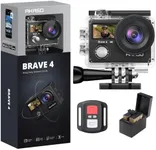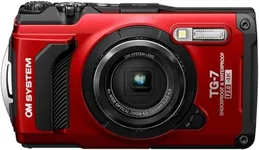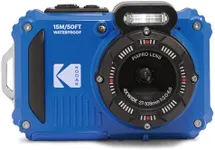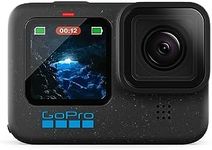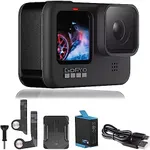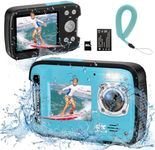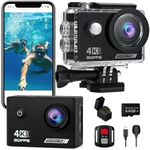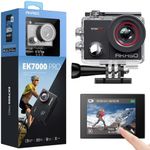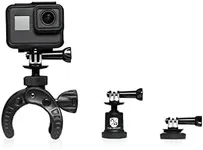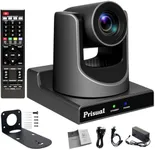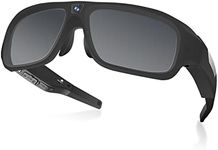Buying Guide for the Best Camera Waterproofs
Choosing the right waterproof camera can be a bit overwhelming, but with the right approach, you can find the perfect fit for your needs. Waterproof cameras are designed to withstand water exposure, making them ideal for underwater photography, beach vacations, and rainy adventures. When selecting a waterproof camera, it's important to consider several key specifications to ensure it meets your requirements. Here are the main specs to look at and how to navigate them.Waterproof Depth RatingThe waterproof depth rating indicates how deep the camera can go underwater without getting damaged. This spec is crucial if you plan to use the camera for diving or snorkeling. Cameras with a depth rating of up to 10 meters (33 feet) are suitable for casual swimming and snorkeling. For scuba diving, look for cameras with a depth rating of 30 meters (100 feet) or more. Choose a depth rating based on the activities you plan to do; the deeper you go, the higher the rating you will need.
Image QualityImage quality is determined by the camera's sensor size and resolution. A larger sensor and higher resolution will generally produce better images, especially in low light conditions. For casual use, a camera with a resolution of 12-16 megapixels is sufficient. If you are a photography enthusiast or professional, you might want a camera with 20 megapixels or more. Consider what you will be using the photos for; social media posts require less resolution than large prints.
DurabilityDurability encompasses the camera's ability to withstand not just water, but also shocks, dust, and extreme temperatures. This is important if you plan to use the camera in rugged environments. Look for cameras that are shockproof, dustproof, and freezeproof. For general outdoor use, a camera that can withstand drops from 1.5 meters (5 feet) and temperatures down to -10°C (14°F) is usually sufficient. If you are into extreme sports or harsh conditions, opt for higher durability ratings.
Battery LifeBattery life determines how long you can use the camera before needing to recharge or replace the battery. This is important for long trips or activities where charging options are limited. Cameras with a battery life of around 200 shots per charge are adequate for casual use. For extended trips or heavy use, look for cameras with 300 shots per charge or more. Consider how long you will be away from power sources and how frequently you plan to use the camera.
Size and WeightThe size and weight of the camera affect its portability and ease of use. A compact and lightweight camera is easier to carry around and handle, especially for travel and outdoor activities. Cameras weighing around 200-300 grams (7-10 ounces) are generally considered lightweight and portable. If you need a camera for professional use or with advanced features, be prepared for a slightly heavier model. Think about how you will be carrying the camera and how important portability is to you.
Lens OptionsLens options refer to the camera's ability to zoom and the availability of interchangeable lenses. This is important for capturing different types of shots, from wide-angle landscapes to close-up details. Fixed lens cameras with optical zoom ranges of 3x to 5x are suitable for general use. For more versatility, look for cameras with higher optical zoom or the ability to change lenses. Consider what types of photos you want to take and whether you need the flexibility of interchangeable lenses.
ConnectivityConnectivity options, such as Wi-Fi, Bluetooth, and GPS, allow you to easily transfer photos, control the camera remotely, and geotag your images. This is important for sharing photos quickly and keeping track of where they were taken. Cameras with Wi-Fi and Bluetooth are great for instant sharing and remote control. GPS is useful for travel photography to record location data. Think about how you plan to use and share your photos and whether these features are important to you.
